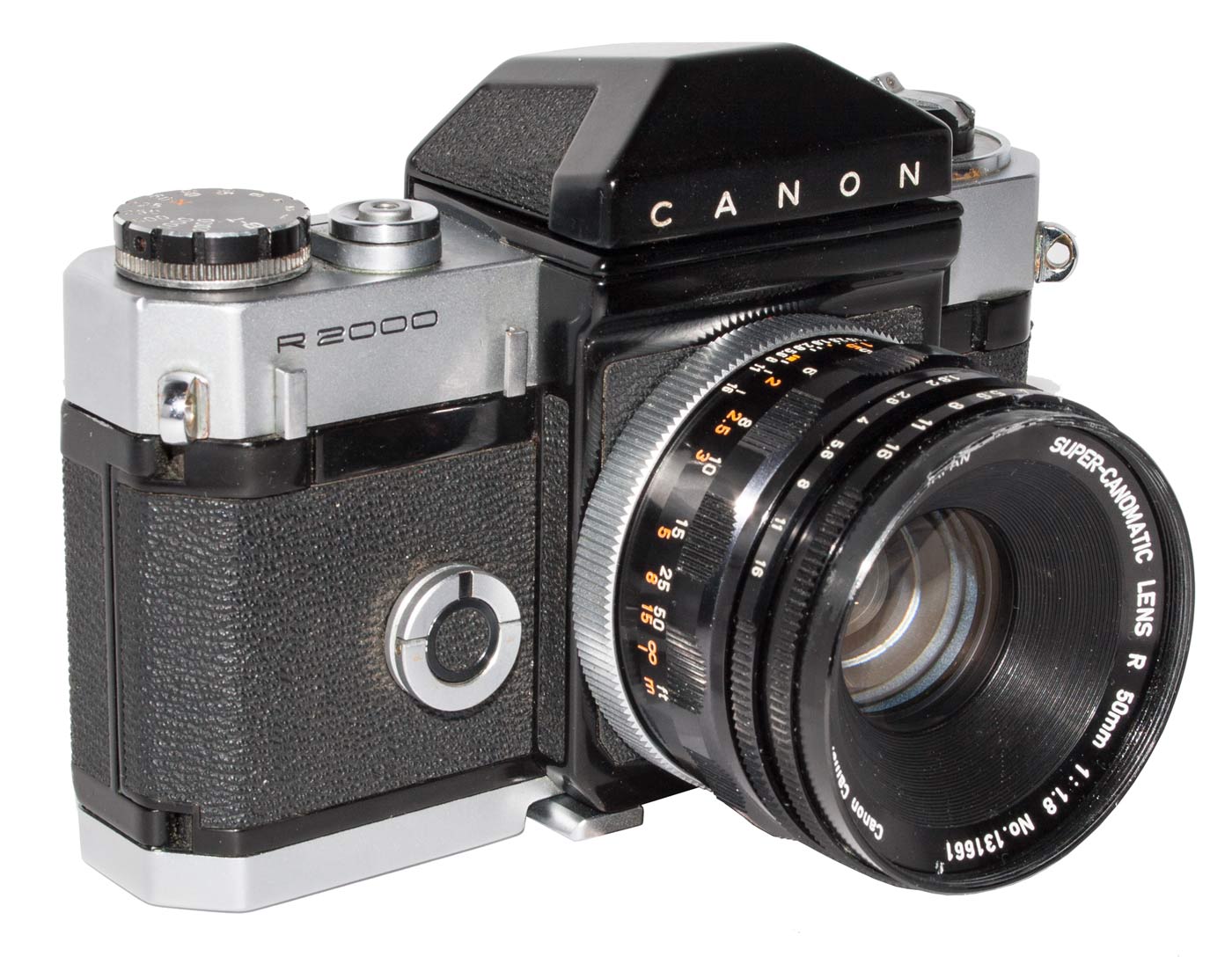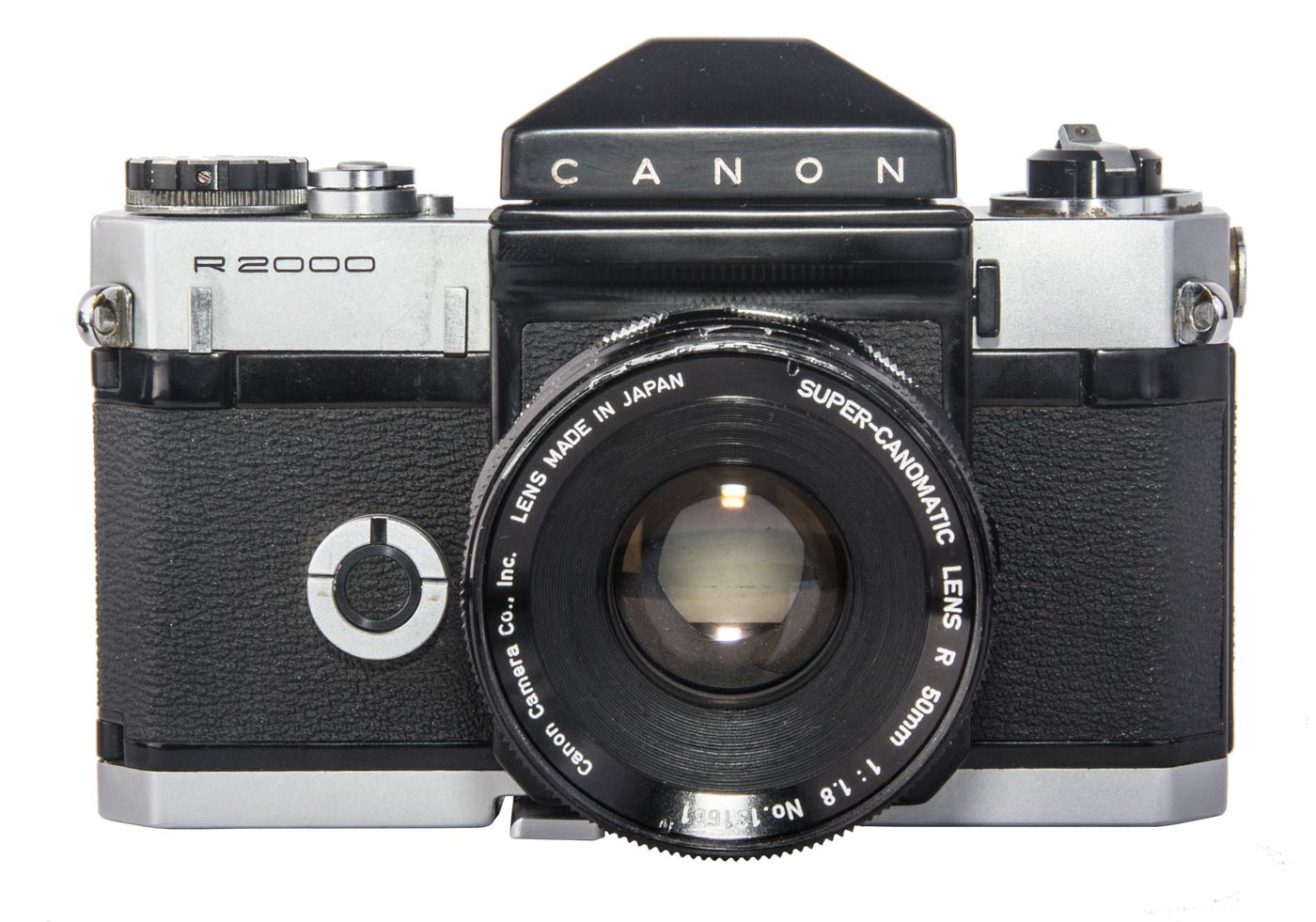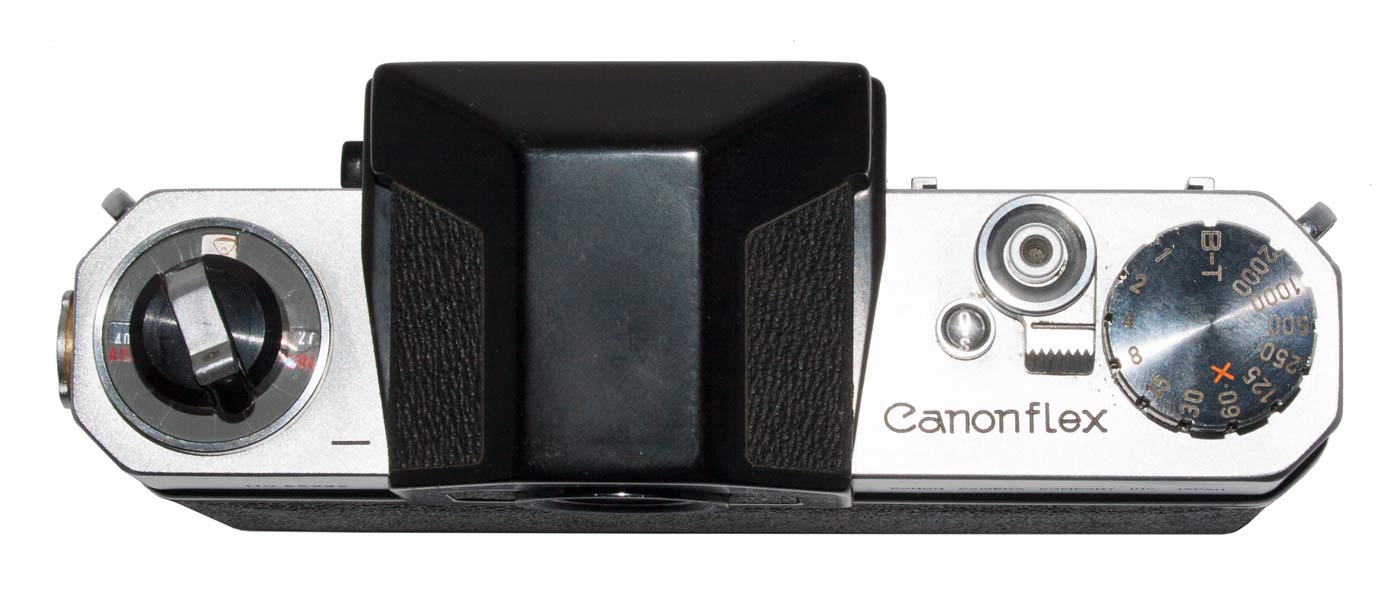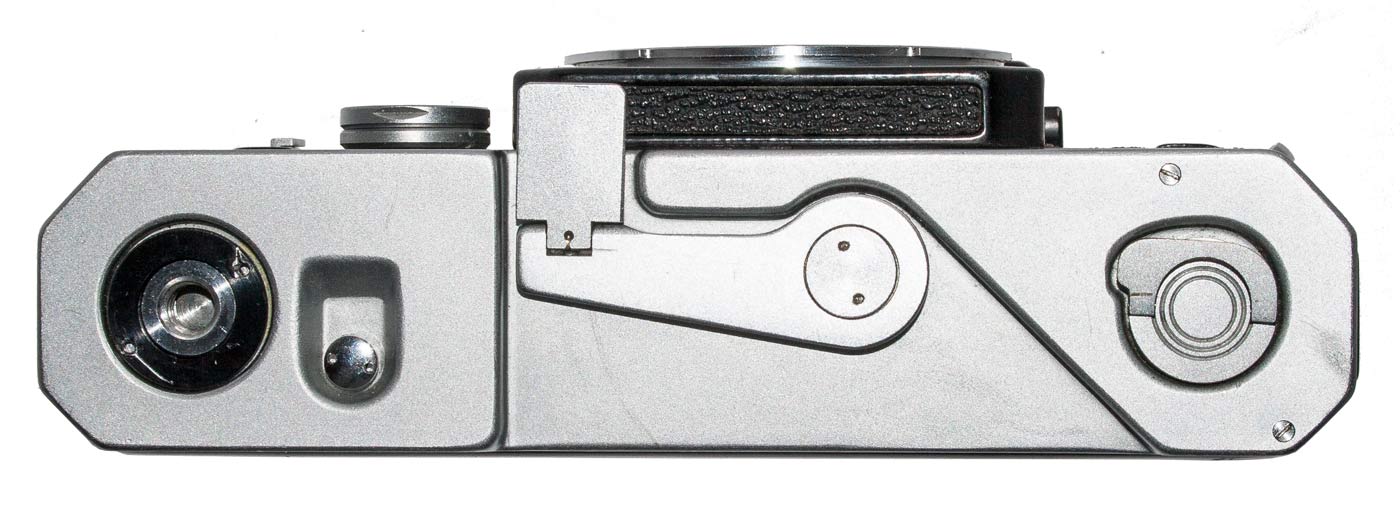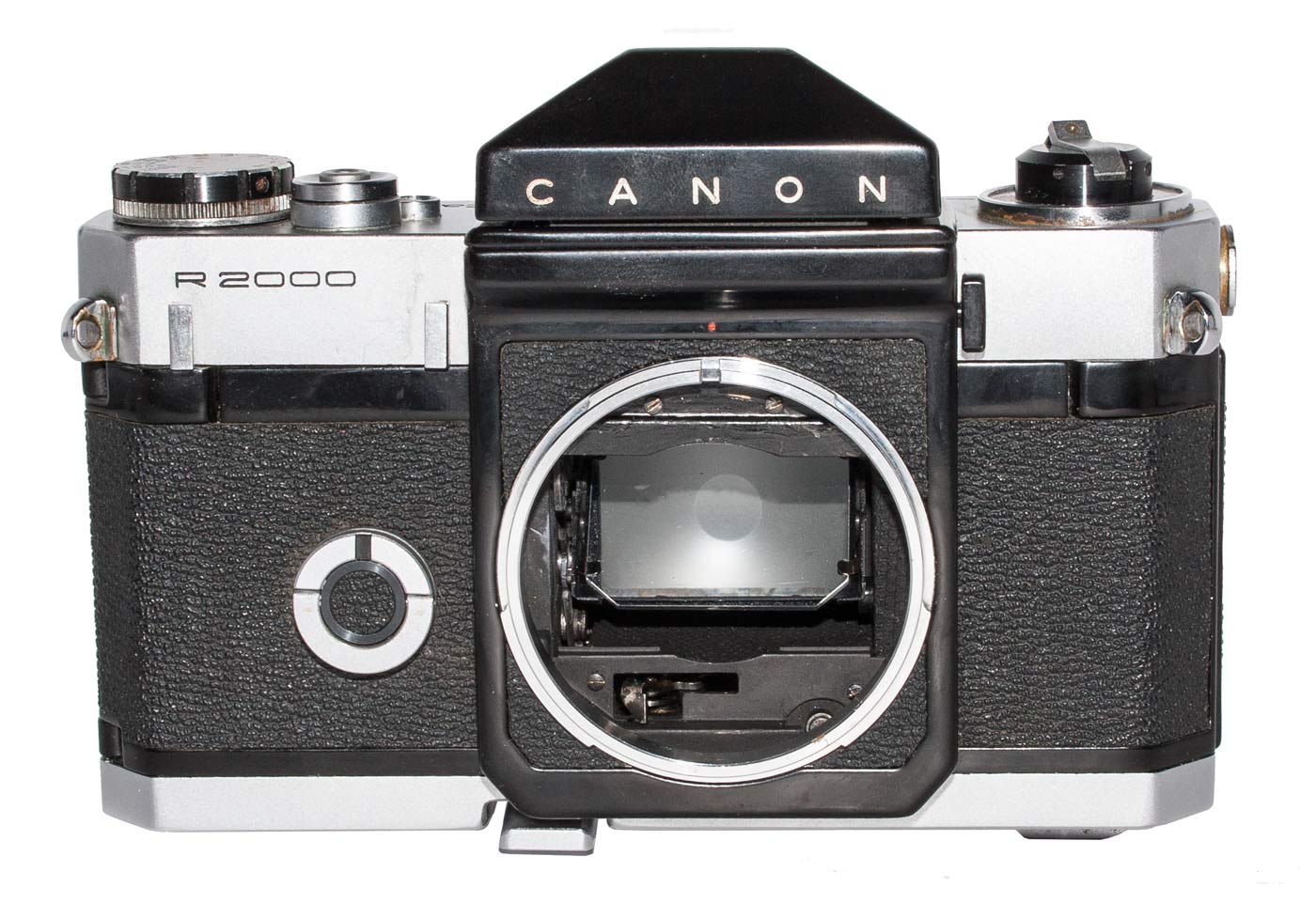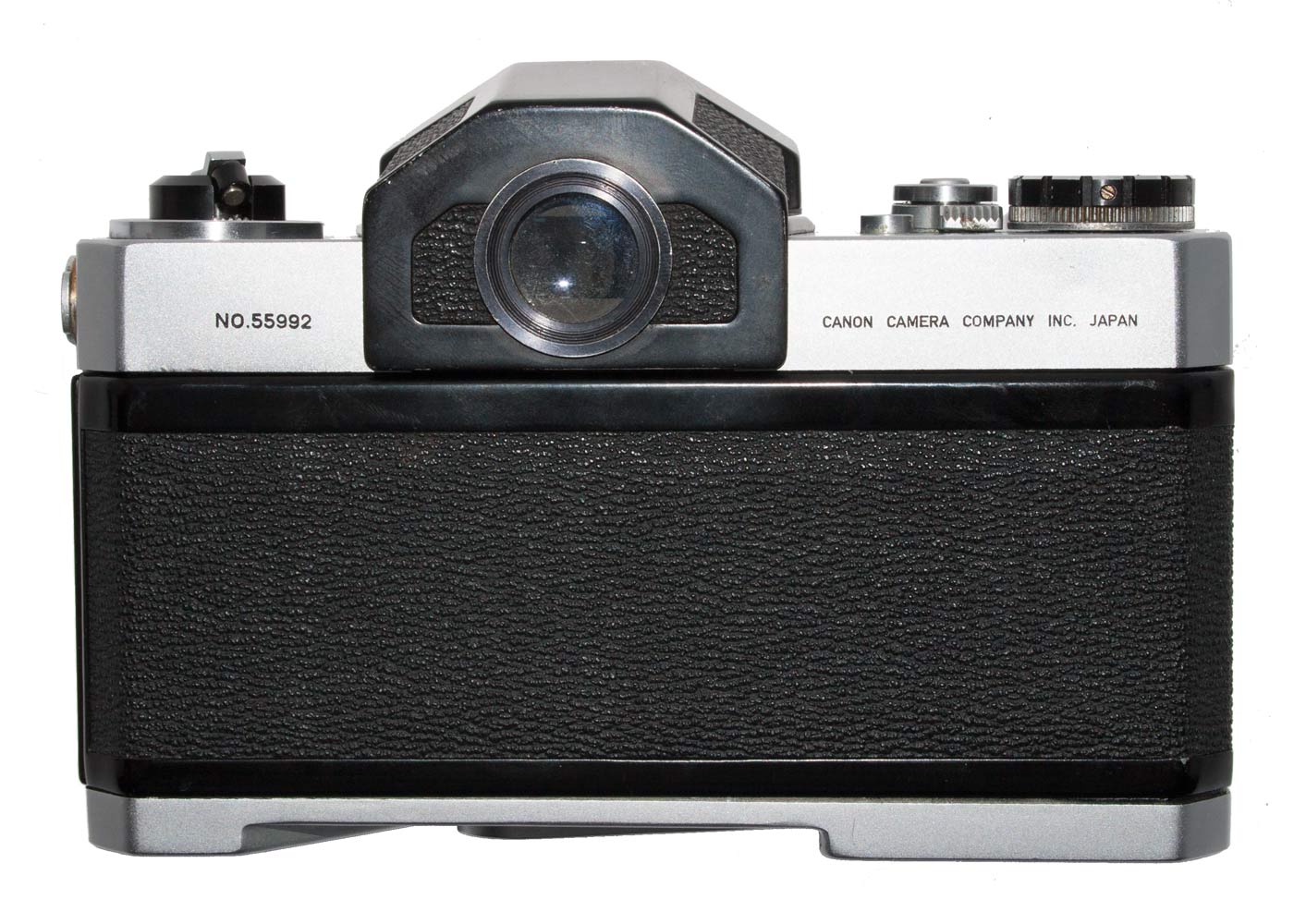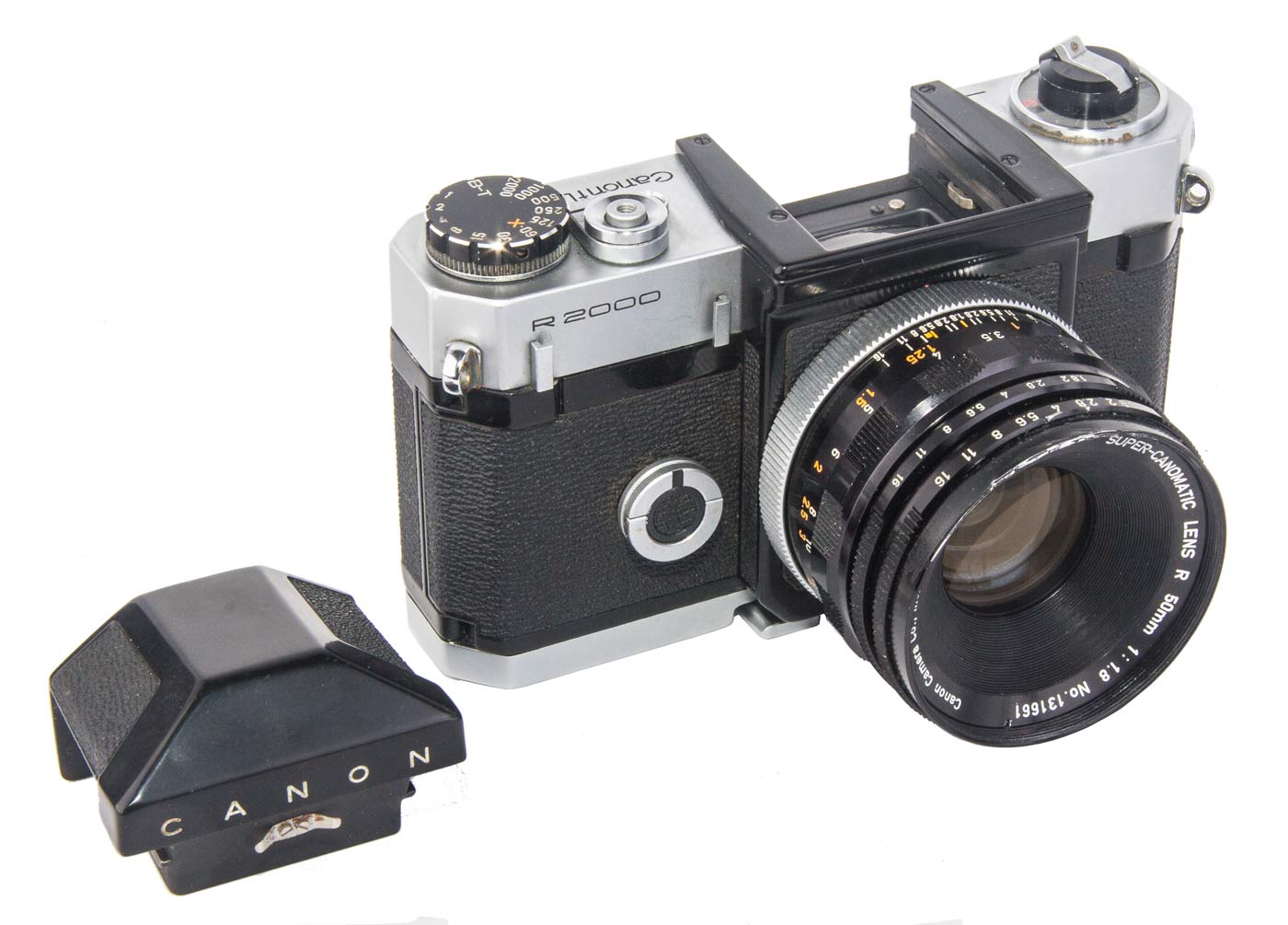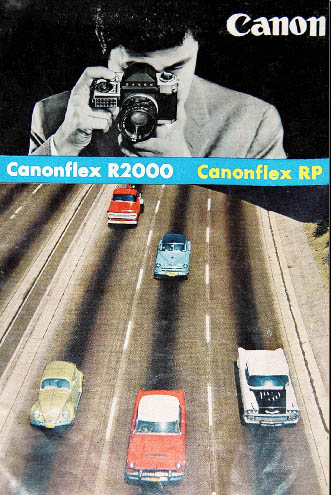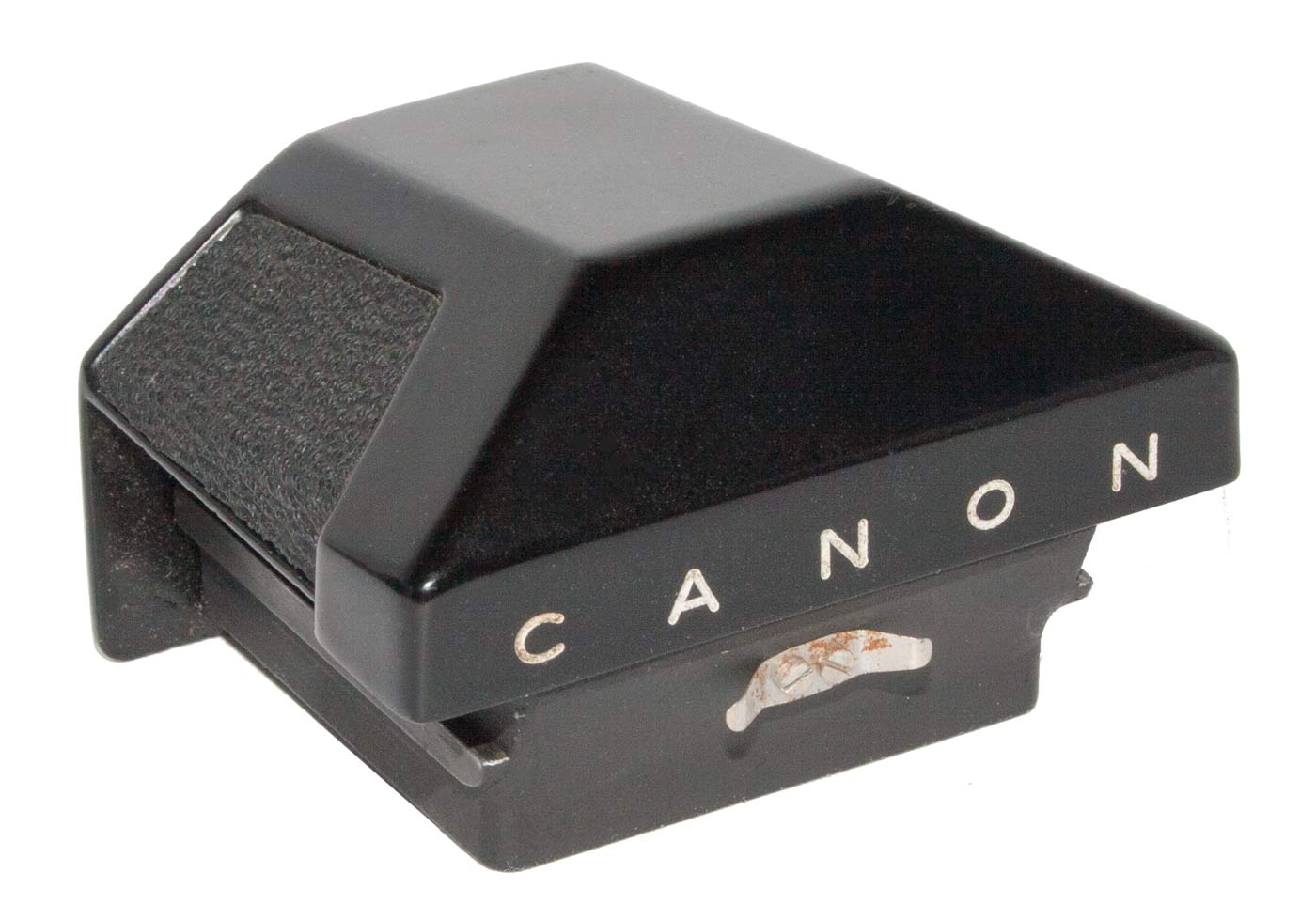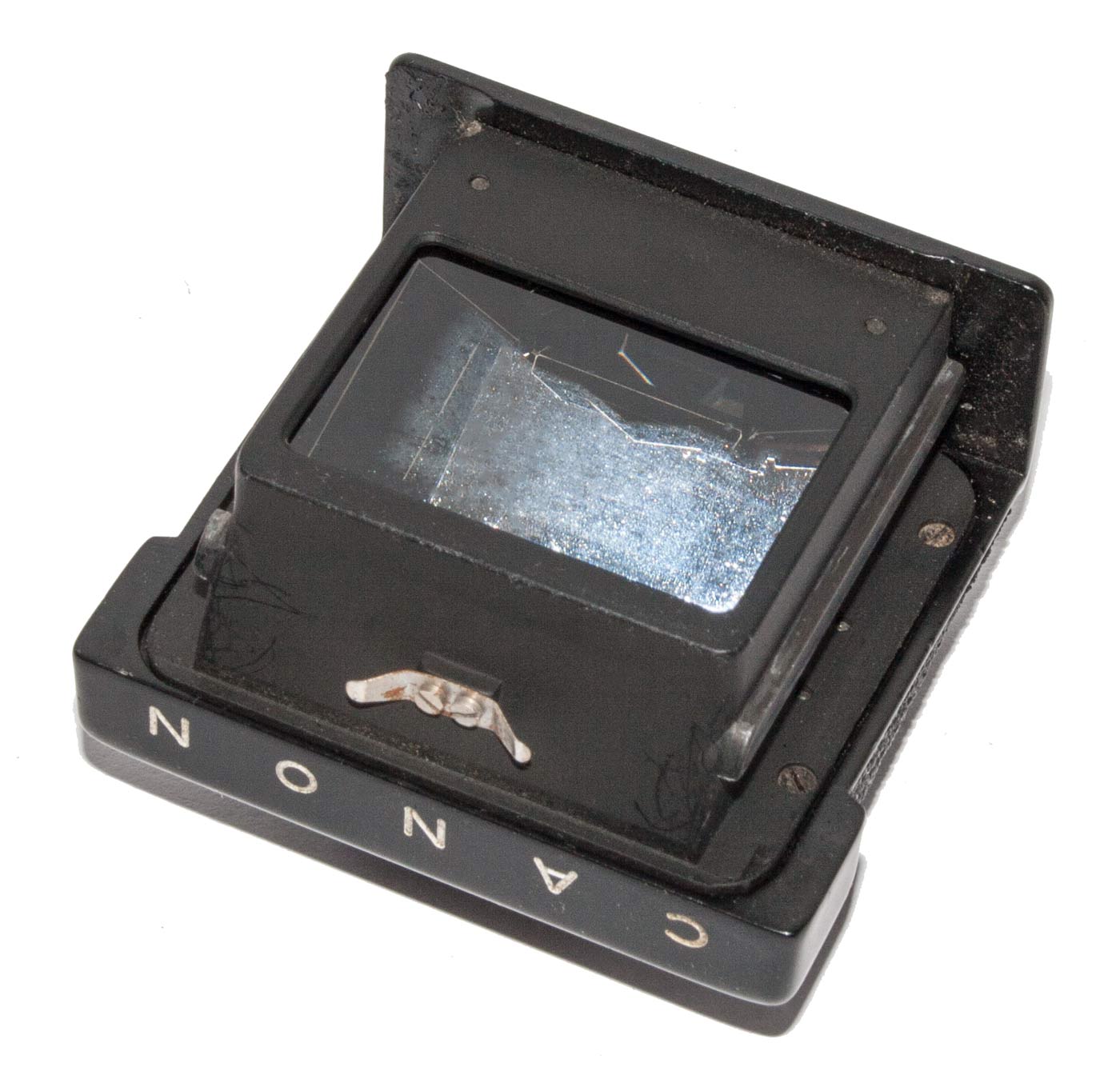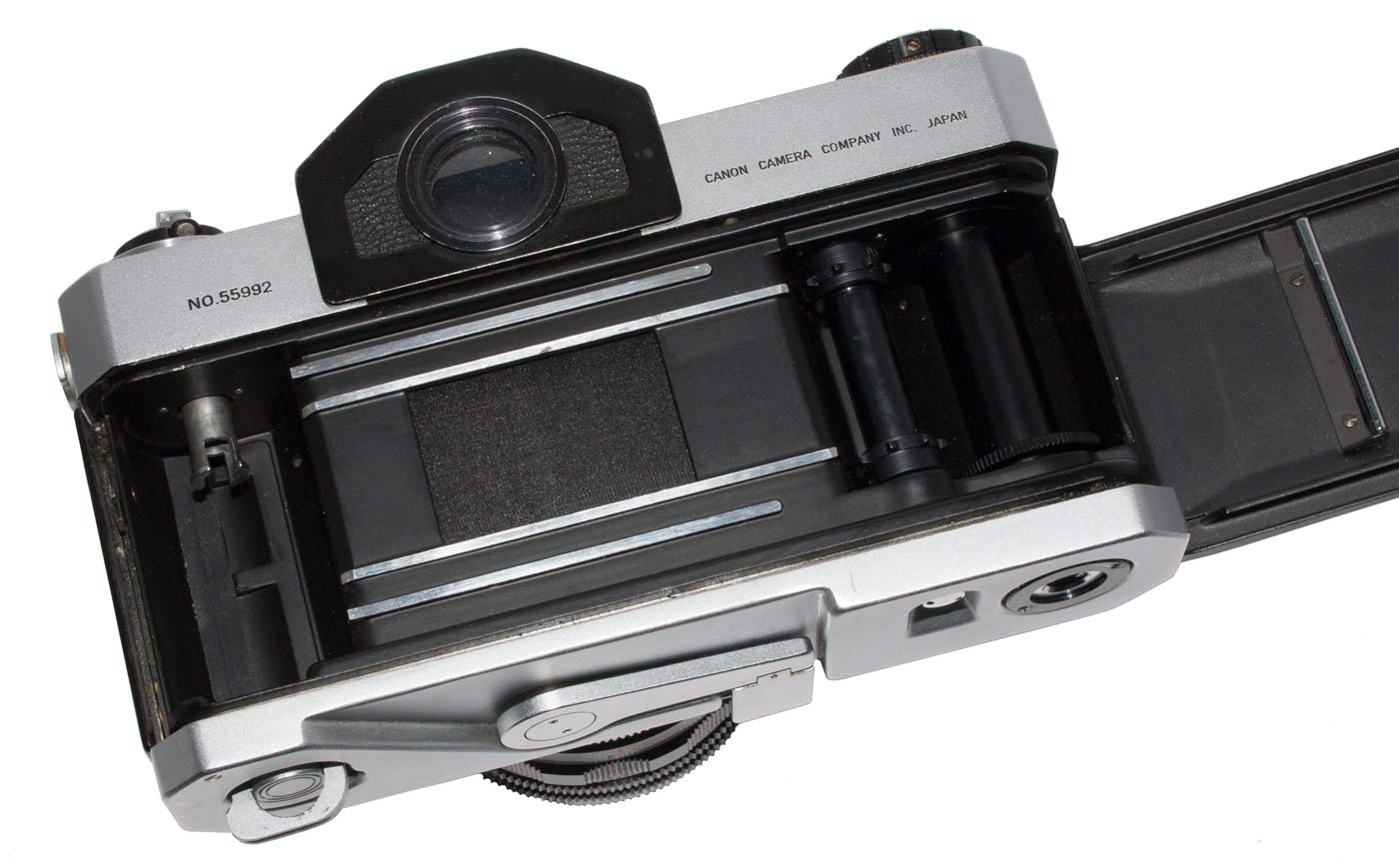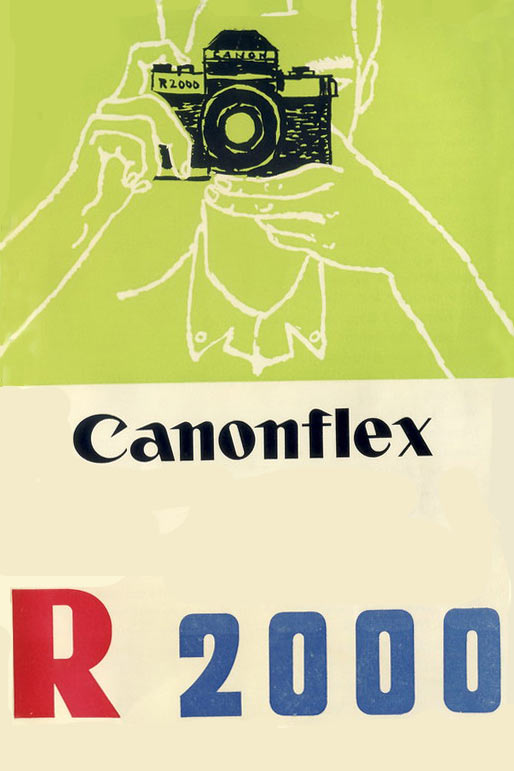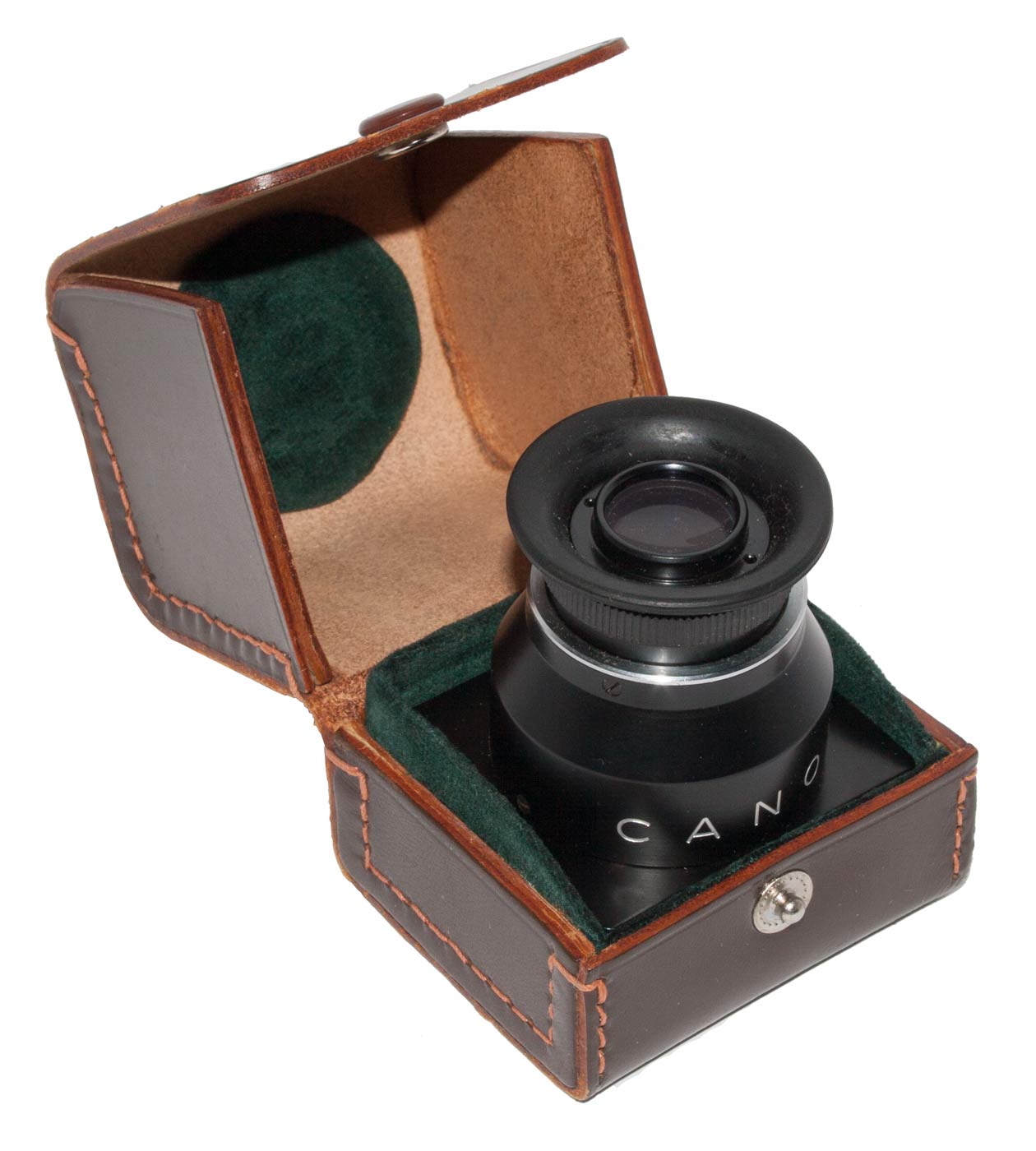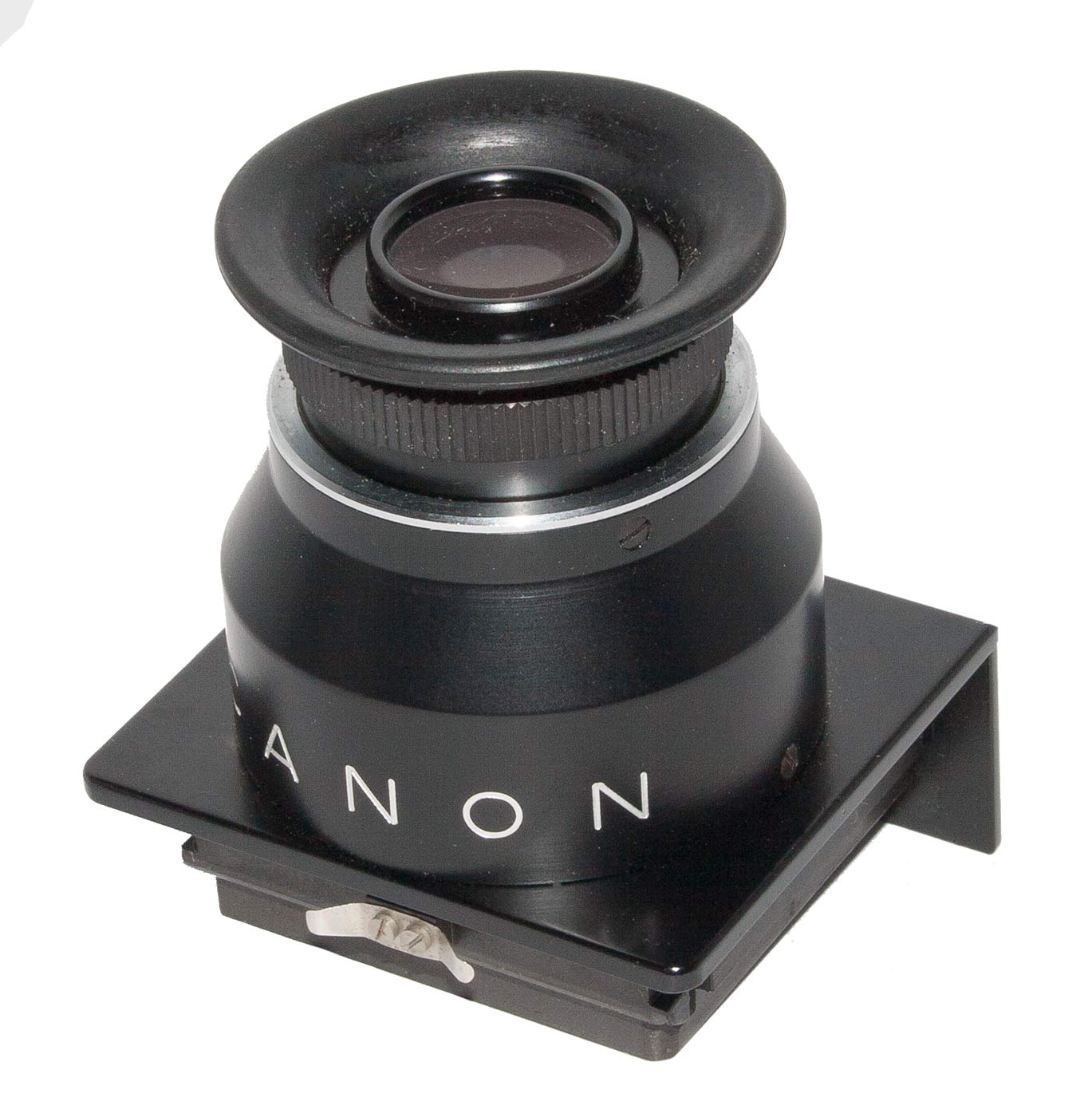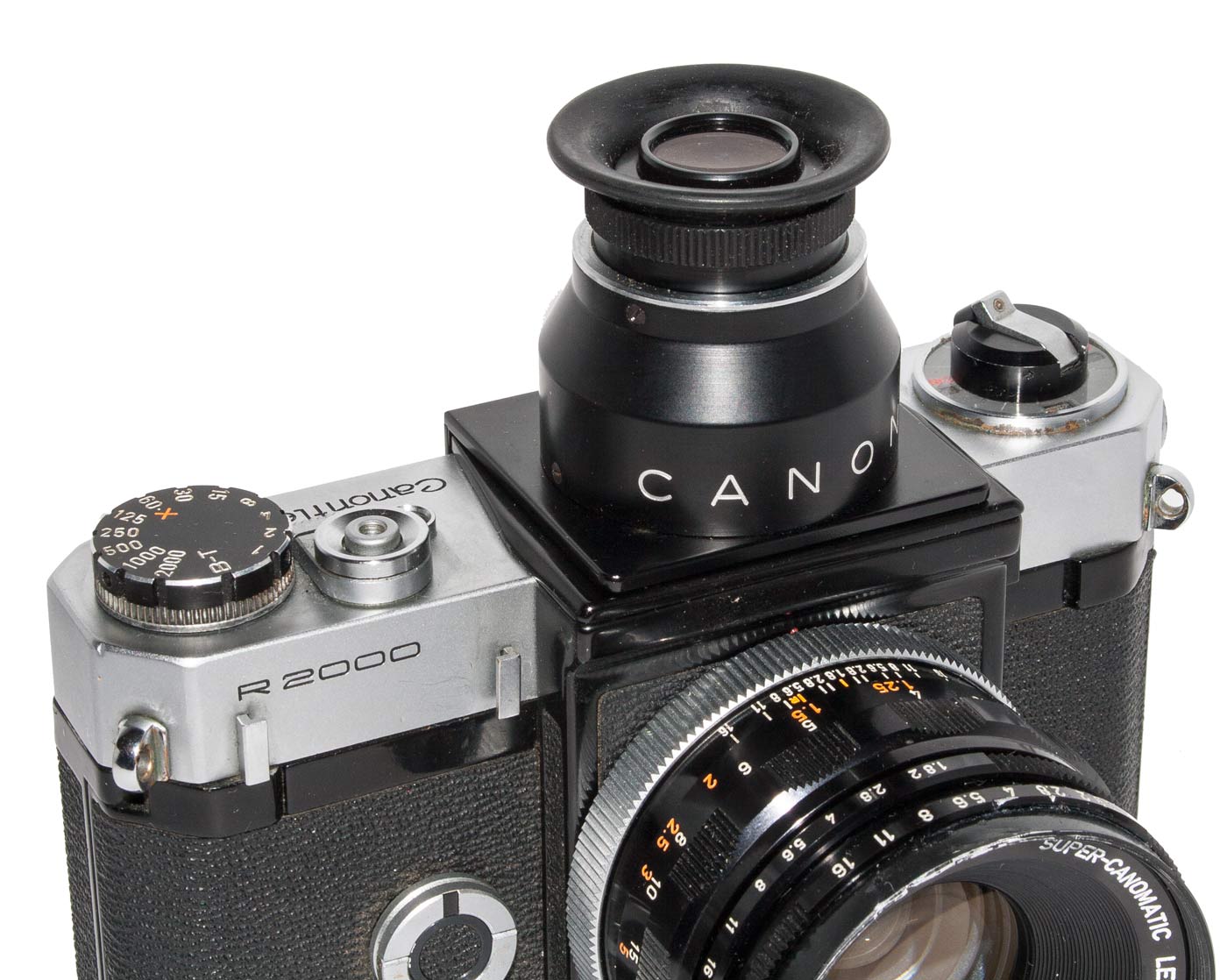The R2000 is a clean well made camera with a precision feel in the hands. The viewfinder is bright and, with the lens wide open, easy to focus in good light.
This is my Canonflex R2000 (Ser. No. 55992). On the top of the lens barrel you can see some damage. I was given this lens with a severe dent in the filter ring which I removed. I can now thread filters with no problems but the damage is still apparent.
Canon R2000
The original Canonflex was launched in May of 1959. It was the first SLR from Canon which, to that point, had been a maker of fine rangefinder cameras.
At almost the same time Nikon
brought out the Nikon F and largely eclipsed the Canonflex lineup.
The Canonflex was in production for a year when Canon brought out the “Flex” R2000 in September of 1960. This camera was intended as a deluxe version of the Canonflex. It was very similar in most respects but it boasted a top shutter speed of one two thousandth of a second (thus the name) which was the highest shutter speed then available on a commercial 35mm camera.
There were apparently only about 8,800 units made and today the camera is relatively rare. Serial number range is 50646 through 59281. The normal lens it came with was the Super-Canomatic 50mm f/1.8 “nifty fifty”.
The Canon Flash Unit V or the Canon Speedlite Unit V attached to the bayonet socket on the right edge of the camera (in the picture) and sync settings were automatic. Instructions for this are included in the User Manual at page 22.
On the Left side of the camera on the front of the top plate are two cleats onto which the Canon-Meter R could mount to calculate exposure. Operation of this
clip-on selenium cell meter is described in the User Manual beginning at page 9. The meter for the R2000 was special in that it had the 1/2000th shutter speed included in its range unlike the meter for the original Canonflex.
This is a heavy camera. That becomes a problem because, with the rewind lever on the bottom plate, the tripod socket is located at one end. This means the tripod camera connection puts a strain on the camera, especially with heavier long lenses. To overcome this Canon offered the Camera Holder R2 which centered the mount and held the camera securely (User Manual Page 29).
At the left end of the top deck under the rewind crank is a film speed and film type reminder. On the right side, coming down from the shutter release is a shutter lock but it is only effective if the camera is not cocked.
In the right side of the mirror box at the top is a small button sticking out. Pushing this down releases the lock on the prism so you can slide it back and off of the camera.
Like the Nikon F the prism on the Canonflex R2000 could be removed but then Canon forgot to supply accessories to make use of this feature. The viewing screen was fixed in place. The only replacement viewfinder was the Waist Level Viewfinder which was useful on a photocopy stand but not very useful for general photography. This lack of options made the removable prism almost seem pointless.
With the Pentaprism removed the ground glass focusing screen is visible under its condenser lens. It is a simple ground glass with no split image device to make focusing easier.
The pentaprism is a precise optical device that must be treated with care and protected. Do not touch the glass surfaces! Prisms from the Canonflex and the R2000 are interchangeable.
When you swing the back open you find a
very traditional interior. There is no Quick Loading
feature. Film must be manually inserted into the take up
spool on the right. At the left is the key to open the back. The offset tripod mount is
on the right if the bottom plate. The shutter curtain is rubberized fabric. You can see the film advance arm is recessed into the bottom plate and the fold down tab for your finger, when stowed, forms a foot for added stability as it projects slightly from the front of the bottom plate.
When you turn to the last few pages of the instruction manual you will see a list of accessories for the R2000: a selenium clip on meter, flash units, Waist Level Viewer, filters, the Bellows R, Camera Holder R2, focusing adapter for some rangefinder lenses, two lens mount converters, closeup lenses and copy stands carried over from rangefinder cameras. This is not an impressive list when you compare it to the accessories offered by Nikon for their Model F. This is one of the reasons the Canonflex cameras did so poorly against the Nikon offering.
The Waist Level Viewer was an additional accessory available. It came in a nice leather leather case.
The Waist Level Viewer slips easily onto the top of the camera. The eyepiece rotates to provide focus images in the viewer.
Using the R2000
I like the R2000. Using it is essentially the same as using the original Canonflex. For the amateur who enjoys shooting film this is a great camera. It is heavy and you should have a good camera strap. Do not trust an old original leather strap. They are likely to separate and drop the camera.
I have played with the Waist Level Viewer and have dismissed it for “walk around” photography. It is awkward and offers no advantages to the casual photographer, which I am. It is funny. That said I still like the Waist Level Viewer. It is beautifully made and the case it comes in is excellent. But it would only offer an advantage if the camera setup made it impossible to get your head comfortably behind the prism and its eyepiece.
The R2000 is completely manual meaning that you have to use a hand held meter and set the aperture and f/stop yourself. For me that is not a problem but is actually part of the fun in shooting film.
The bottom wind takes some getting used to but it is convenient to use in most situations. Pictures can be taken in quick succession without removing your eye from the eyepiece so that is something. But all in all, I prefer the standard top mounted winding lever.
This is a solid reliable camera and fun to shoot. Is it my favorite? No, not really. But I am glad I have one, anyway.
This website is the work of R. Flynn Marr who is solely responsible for its contents which are subject to his claim of copyright. User Manuals, Brochures and Advertising Materials of Canon and other manufacturers available on this site are subject to the copyright claims and are the property of Canon and other manufacturers and they are offered here for personal use only. Use of this website is governed by the Terms of Service set out on the page by that name.

The True North Strong and Free

